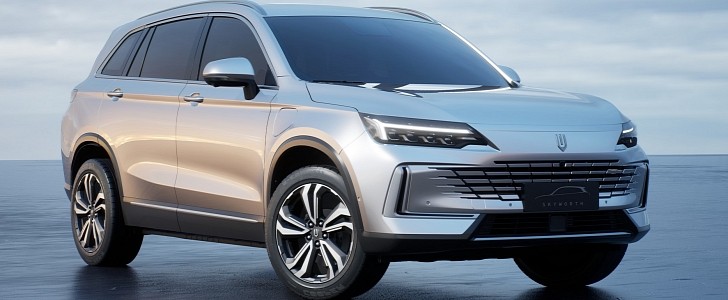Most car companies are now discussing if they should verticalize components. That means that they are still studying the benefits of building these parts on their own, something that Tesla follows as much as possible. BYD is passed that stage. Apart from making everything in-house, it is now supplying its secret sauce to other companies, such as the DM-i plug-in hybrid system.
As we have already told our readers, BYD built the world’s most efficient combustion engine at the service of ist PHEV system. Called Xiaoyun, the 1.5-liter four-cylinder mill uses the Atkinson cycle and has a thermal efficiency of 43%. Toyota is the company that comes closest to this with its Dynamic Force 2-liter engine: it reaches a thermal efficiency of 40%. That means that the BYD engine only wastes 57% of the chemical energy in fuel in heat and other losses.
Another essential part of the DM-i system is the Blade Battery, a pack of LFP cells that promise to live for 1.2 million kilometers (745,645.4 miles). It is also cheaper than ternary cells and more resistant to thermal runaways. BYD created the EHS (Electric Hybrid System) to allow these two core components to work together or separately to power the wheels.
This is what Skyworth Auto wants its cars to have. The first vehicle to get the DM-i is the Skyworth HT-i, the plug-in hybrid version of the Skyworth EV6 – yes, it has the same name as the Kia electric vehicle. Curiously, this vehicle may eventually be sold in the U.S. as the Imperium SEV. We're yet to hear when the company will start delivering the electric SUV. So far, it is only taking reservations for it.
The Skyworth HT-i did not have its dimensions disclosed. Despite that, they must be exactly the same as the EV6 (not the Kia) presents. The electric sibling is 4.70 meters (185 inches) long, 1.91 m (75.1 in) wide, 1.70 m (66.8 in) tall, and has a wheelbase of 2.80 m (110.2 in). The Skyworth EV6 weighs 1,920 kilograms (4,233 pounds). The HT-i must be lighter than that.
In the HT-i, the 1.5-liter Xiaoyun engine delivers 81 kW (109 hp) and 135 Nm (99.6 pound-feet). That makes us suppose that it is used solely to charge the battery pack instead of also moving the Skyworth SUV. We’ll try to confirm that with the company. According to CNEVPost, it plans to sell 250,000 units of the EV6 by 2025 and 500,000 EVs by 2030. It is unclear how many of these units will be for the HT-i.
With the Blade Batteries, the plug-in hybrid has a total range of 1,267 kilometers (787 miles) and 200 km (124 mi) of electric-only range, which is superior to that presented by some electric vehicles for sale nowadays.
Another essential part of the DM-i system is the Blade Battery, a pack of LFP cells that promise to live for 1.2 million kilometers (745,645.4 miles). It is also cheaper than ternary cells and more resistant to thermal runaways. BYD created the EHS (Electric Hybrid System) to allow these two core components to work together or separately to power the wheels.
This is what Skyworth Auto wants its cars to have. The first vehicle to get the DM-i is the Skyworth HT-i, the plug-in hybrid version of the Skyworth EV6 – yes, it has the same name as the Kia electric vehicle. Curiously, this vehicle may eventually be sold in the U.S. as the Imperium SEV. We're yet to hear when the company will start delivering the electric SUV. So far, it is only taking reservations for it.
The Skyworth HT-i did not have its dimensions disclosed. Despite that, they must be exactly the same as the EV6 (not the Kia) presents. The electric sibling is 4.70 meters (185 inches) long, 1.91 m (75.1 in) wide, 1.70 m (66.8 in) tall, and has a wheelbase of 2.80 m (110.2 in). The Skyworth EV6 weighs 1,920 kilograms (4,233 pounds). The HT-i must be lighter than that.
In the HT-i, the 1.5-liter Xiaoyun engine delivers 81 kW (109 hp) and 135 Nm (99.6 pound-feet). That makes us suppose that it is used solely to charge the battery pack instead of also moving the Skyworth SUV. We’ll try to confirm that with the company. According to CNEVPost, it plans to sell 250,000 units of the EV6 by 2025 and 500,000 EVs by 2030. It is unclear how many of these units will be for the HT-i.
With the Blade Batteries, the plug-in hybrid has a total range of 1,267 kilometers (787 miles) and 200 km (124 mi) of electric-only range, which is superior to that presented by some electric vehicles for sale nowadays.






